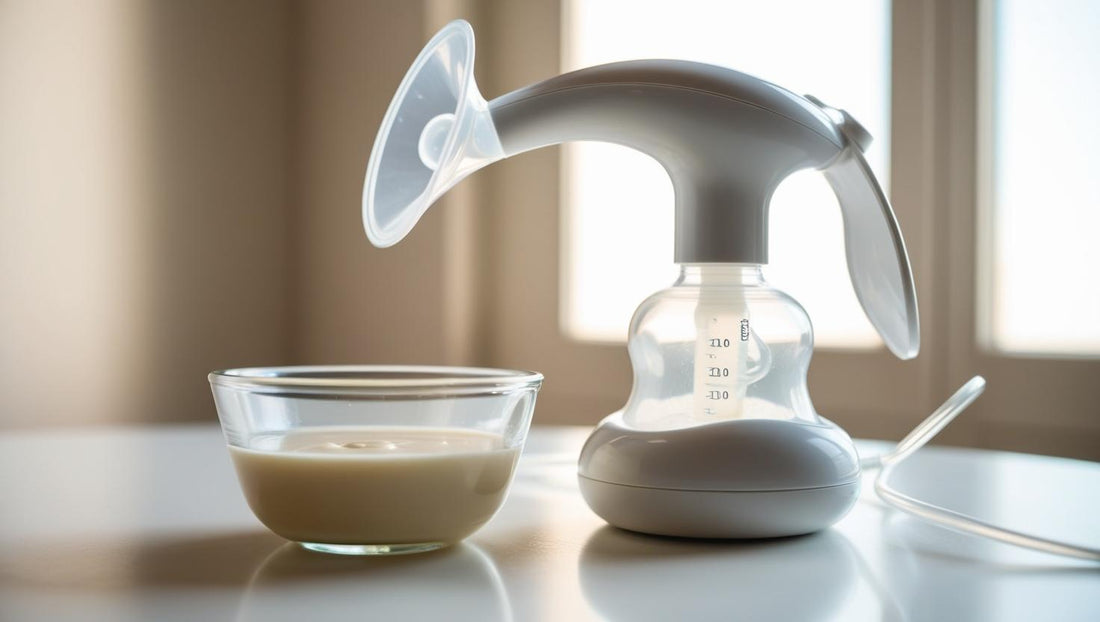
The Million-Dollar Question: How Long Should You Pump in a Session?
Share
Breast milk production works on a supply-and-demand system—the more you express, the more your body is signaled to produce. However, the amount of milk you make and how long it takes to empty your breasts can differ for everyone.
Once your milk supply is established, maintaining it requires regularly emptying your breasts, whether by nursing or using a breast pump. This consistent emptying tells your body to keep producing milk. Don't worry—you're never completely 'empty'; there's always some milk in reserve. While pumping isn't essential for every breastfeeding journey, it can be a game-changer if you're heading back to work or exclusively pumping. Ready to dive in? Let's get started.
The Pumping Puzzle: Finding Your Rhythm
There's no magic number when it comes to pumping sessions. What works for your best friend might not work for you. It's all about understanding your body, your baby's needs, and the type of breast pump you're using. Whether it's a double electric breast pump, a wearable breast pump, or even a First Years breast pump, the principles remain the same.
General Guidelines: A Starting Point
Most experts recommend pumping for about 15-20 minutes per session. This is a good starting point for most moms. However, this is just a guideline. You may need to pump longer or shorter depending on several factors.
Factors That Influence Pumping Time
Your Milk Supply: If you have a well-established milk supply, you might only need to pump for 10-15 minutes. If you're trying to increase your breast milk supply, you might need to pump for longer, perhaps 20-30 minutes.
Baby's Age: Newborns have tiny tummies and require frequent feedings. In the early days, you might need to pump more frequently, but for shorter periods.
Type of Pump: A double electric breast pump typically extracts milk faster than a single electric or manual pump. Electric pumps with efficient suction, like the Anwike 381 Breast Pump, can significantly speed up the process. Plus, it's built for long-term use, so you won't have to worry about it suddenly failing.
Pumping Frequency: How often you pump throughout the day will also influence how long you need to pump each time.
Personal Comfort: Listen to your body! If you experience any discomfort or pain, stop pumping immediately.
Tips for Efficient Pumping
Pump Frequently: Especially in the early days, frequent pumping (every 2-3 hours) can help establish a good milk supply.
Power Pumping: This technique involves pumping for 20 minutes, resting for 10 minutes, then pumping again for 10 minutes. It can be helpful for increasing milk supply.
Massage: Gently massaging your breast while pumping can help stimulate milk flow.
Relax: Try to relax during your pumping sessions. Stress can interfere with milk letdown.
Hydrate: Drink plenty of water throughout the day.
Replace Pump Parts: Pump parts, like the breast shield and tubing, need to be replaced regularly for optimal suction and hygiene.
When to Seek Professional Advice
If you have any concerns about your milk supply, pumping routine, or experience any pain while pumping, don't hesitate to contact a lactation consultant. They can provide personalized guidance and support.
Conclusion
Finding the right pumping routine takes time and patience. Listen to your body, experiment with different pumping times, and don't be afraid to ask for help. Remember, you're doing an amazing job, mom!
